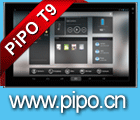Shiratech is an Israeli company that creates development boards. Shiratech produces ARM system on modules that cut time to market significantly and reduce project development risk. Shiratech has several new platforms launching soon.
Category: Development Boards
Shiratech shows LTE, NB-IoT, FPGA, Bosch sensors Mezzanine boards for 96Boards
Shiratech produces ARM system on modules that cut time to market significantly and reduce project development risk. The Mezzanine board by shiratech is a dev board that provides LTE connectivity and can be connected to an arduino or Raspberry Pi. The SPECIFICATIONS are MAX-10 10M04: 256 FPGA package, 4K Logic Elements, 189Kb Block memory, Up to 156KB user FLASH memory, Dual internal configuration, and 178 GPIO FPGA programming using Altera standard programming connector.
Koen Kooi, talks Kodi, Yocto at Linaro Connect Vancouver 2018
Koen Kooi is a release manager at Linaro, developer on the Angstrom project, contributor to the Kodi project, demonstrating Kodi running on a lot of different development boards at Linaro Demo Friday here https://www.youtube.com/watch?v=wipB2_6OKus One of his projects is video playback using accelerated decoding. This accelerated playback can be used in Kodi as well as in HTML5 and web video playback.
Arrow shows latest 96Boards and Mezzannine boards
Arrow shows some of their latest 96Boards and Mezzanine boards such as the Renesas ANT96 board based on the Renesas RZ Family Renesas RZ/G1E processor featuring a dual-core Arm Cortex-A7. Novtech Meerkat i.MX7D and Chameleon Cyclone V Altera/Intel FPGA board. NextBiometrics NB-2023-S fingerprint sensor mezzanine board, STM32 Sensor mezzanine board and more. Arrow has more than 5 Mezzanine boards in the pipeline and at least 2 base boards too. Oxalis Layerscape LS1012A.
Marcelo Knörich Zuffo of the University of San Paolo in Brazil at Linaro Connect Vancouver 2018
Marcelo Knörich Zuffo is a professor of the Electronic Systems Engineering Department of the Polytechnic School of the University of San Paolo in Brazil. He teaches people how to design electronics and has projects going on such as drones using development boards such as the 96Boards platform. He also teaches PCB design. His particular specialty is autonomous drones that don’t require human control. He uses boards from 96boards.
EBBR: Embedded Base Boot Requirements at Linaro Connect
Standard pre-boot environment and boot sequence for embedded platforms, featuring:
– Upstream support in U-Boot
– UEFI ABI
– Firmware-provided system description (DT)
– Boots generic OS images
By standardizing the boot interfacei, platform specific details don’t need to be encoded into the OS, and the ABI supports portable pre-boot applications for test and boot control, future work will be on the more standard UEFI featured (e.g. Secure Boot).
Android Treble on Texas Instruments Beagle-X15 at Linaro Connect
Android Treble implemented on TI Beagle-X15 development board which is ARM Cortex-A15, making the upgrade process easier. So there is no need to communicate with the vendor to upgrade a device.
Kodi Playback with Standard V4L2 Stack
Full upstream implementation of Hardware accelerated video decoding (mainly H264) with the generic V4L2 Mem2Mem API, Zero-copy rendering with DRM Atomic kernel Drivers, DMA-BUF transferred from V4L2 to DRM, FFmpeg V4L2 Mem2Mem integration with Kodi, Kodi GBM Display for Atomic Direct to plane rendering.
Get early access to all videos (weeks/months before everyone else), get business cards to companies filmed, support my video-blogging work, become a member
Wi-Fi and Bluetooth single chip Unisoc in UCRobotics IVY5661 IoT Edition 96Boards development board
This is a Wi-Fi and Bluetooth single chip solution IoT Edition 96Boards, it can be used as a Wi-Fi Repeater, for Bluetooth on-boarding, Bluetooth 5 Mesh Network. It’s an ARM Cortex-M4 dual core, runs Zephyr. You can read more about it here
Get early access to all videos (weeks/months before everyone else), get business cards to companies filmed, support my video-blogging work, become a member
Linux microPlatform, secure IoT updates with Foundries.io and Toradex
At Linaro Connect Vancouver 2018, Foundries.io and Toradex discuss Linux microPlatform, what microPlatform is and how it helps Toradex to build their next generation Software Platform.
Linux microPlatform is an open source, minimal, secure, updatable Operating System based on OpenEmbedded / Yocto Project. Toradex ports the microPlatform to its Arm-based System on Modules and it uses it as the basis for its future Software Planform called Torizon.
Linux microPlatform modularized the embedded software stack utilizing Docker Containers, and so it provides a robust and simple to update platform. It includes a secure Uptane-compliant over-the-air update solution using OSTree.
Founderies.io provides continuous updates to Linux microPlatform, as they believe the latest software is the most secure software.
Toradex also elaborates on its plans to simplify developers’ lives with its Torizon platform leveraging Linux microPlatforms, such as simplifying application development, enabling a modern DevOps workflow and easing migration from Windows-based systems.
Get early access to all videos (weeks/months before everyone else), get business cards to companies filmed, support my video-blogging work, become a member at http://youtube.com/charbax/join
Google IoT Demo for Zephyr RTOS With TF-M Secured on Musca
In this demo, the Trusted Firmware M is providing the SPE and JWT sign, Zephyr is providing the NSPE and The Google IoT application is running on Zephyr using secure services from Trusted Firmware M.
– Platform Security Architecture (PSA) is an IoI security framework being developed by Arm.
– Trusted Firmware M (TF-M) is an open source project to provide PSA compliant secure firmware for M profile devices.
– Zephyr is a Linux Foundation Collaboration Project to provide a small, scalable RTOS for connected, resource constrained device.
– Arm Musca-A1 subsystem based on Armv8-M which allows partitioning the SW execution in Secure and Non Secure domain.
Testing Arm with Arm with LAVA and 96Boards
This is a mini LAVA lab running on a Dragonboard 410c to test any other 96Boards, this is a way to use Arm to test Arm boards in a simple affordable reproducible way.
OpenCV Color Segmentation and Tracking on DragonBoard 820c
This demo is based and tested on the DragonBoard 820c, but should be able to work on varying platforms. In summary, it counts objects by color passing in the same direction through the camera field of view. It can count multiple objects simultaneously. The OpenCV functionality leveraged by this demo includes the following:
– Object segmentation using color
– Valid object identification by size
– Frame stitching to track and count multiple simultaneous moving objects by color
– Provides hooks to monitor performance when algorithm changes to – – OpenCV library calls are made for identification tuning
– Provides hooks to export results to the cloud
Standardizing software support for 96Boards with Mani
Mani is an Applications Engineer at 96Boards team of Linaro. He works on improving the user experience with 96Boards by upstreaming it’s stadardized software support. He goes over the journey of how he started with 96Boards, what his initial responsibilities were and how it has been evolved over time. He also explains his recent work towards standardizing the software support for 96Boards and stresses the importance of having a unified software layout across all 96Boards of same category. In this video, he mentions his latest work towards standardizing the LED labels/triggers in Linux kernel and how that impacts the user experience on userspace library such as MRAA (https://github.com/intel-iot-devkit/mraa).
MRAA library with Mani of 96Boards
MRAA (https://github.com/intel-iot-devkit/mraa) is a low level skeleton library for Linux based systems which provides userspace access to the peripherals on 96Boards Consumer Edition boards using multiple interfaces such as C, C++, Python, Java and Javascript. Mani, being the Co-Maintainer of this library, talks about the history of how 96Boards started using this library instead of their legacy 96BoardsGPIO library. Also, he explains how the MRAA library serves well for them to handle multiple 96Boards with different SoCs which no other platform is doing.
96Boards Mezzanine Initiative
96Boards Mezzanine Initiative is a community-led, organized and maintained initiative. This initiative aims to expand the 96boards ecosystem and promote open-hardware.
96Boards Mezzanine-Community GitHub: https://github.com/96boards/mezzanine-community
$50 eduMIP with 96Boards, BeagleBone, Raspberry Pi, with Thomas Bewley (UCSD Professor)
UC San Diego Professor Thomas Bewley discusses his Segway-like educational robotics kit, eduMIP, based on the BeagleBone Blue at Linaro Connect Vancouver 2018. This inexpensive kit (available online, for $128, at Renaissance Robotics https://www.renaissancerobotics.com/eduMIP.html) is used in his Embedded Control & Robotics course at UCSD, which Prof Bewley is currently working on taking online as a MOOC. It is also beginning to be used by a community of researchers and educators at other universities around the world. In this video, Prof Bewley also introduces his early efforts in developing new (and, significantly higher-power) motor-control daughterboards in the 96boards and Raspberry Pi formats. He also discusses eduMIP v.2 and some other advanced prototypes in his lab, as well as the Robot Control (RC) software library that drives this hardware, and will ultimately enable easy porting of control codes across the BeagleBone, Raspberry Pi, and 96boards linux-based product lines, in addition to deployment onto very-low-cost custom targets based on Cortex M based processors running an RTOS. His ultimate goal with this ambitious effort is to facilitate a much more seamless pathway from lab prototype to commercial product.
ARM desktop for everything, Daniel Thompson uses it for everything
Daniel Thompson has exclusively been using the ARM developerbox you can read more about it here: https://www.96boards.org/product/developerbox/ and you can see Daniel Thompson’s keynote at Linaro Connect here: https://www.youtube.com/watch?v=uAfpd3qFOZg
Self-driving rover using the 96Boards Carbon development board
At the Linaro Connect, Sahaj Sarup, Applications Engineer at 96Boards, based on the IoT Edition Carbon Development Board powered by the STMicroelectronics STM32F401RE ARM Cortex-M4 running Zephyr. There are 6 ultrasonic sensors preventing it from bumping into things, 4 IR sensors preventing it from falling down, there are LED’s also representing the distance to the objects on each side of the self-driving rover.
Avnet shows $249 Ultra96 Xilinx Zynq UltraScale+ MPSoC development board
From idea to design and from prototype to production, Avnet supports customers at each stage of a product’s lifecycle. A comprehensive portfolio of design and supply chain services makes Avnet the go-to guide for innovators who set the pace for technological change. For nearly a century, Avnet has helped its customers and suppliers around the world realize the transformative possibilities of technology.
Avnet has a very strong, technical community focus and is now home to such entities as Premier Farnell, Element14, MakerSource, hackster.io, and Raspberry Pi.
Avnet is Xilinx’ global distributor and technical partner. Xilinx has awarded Avnet a Premier partnership level in their Alliance Program. In addition to distributing Xilinx devices, Avnet also designs development boards, creates and delivers training, and also customizes and manufacturers Xilinx-based boards for customers around the world.
The Ultra96 is an example of this closer partnership, as Xilinx and Avnet have worked together to bring the board to market. Both companies will continue to support the board into the future.



